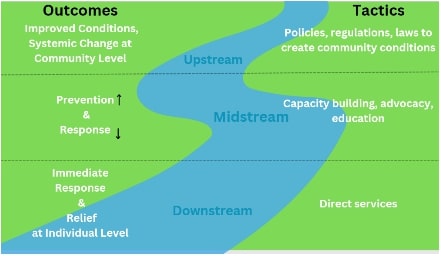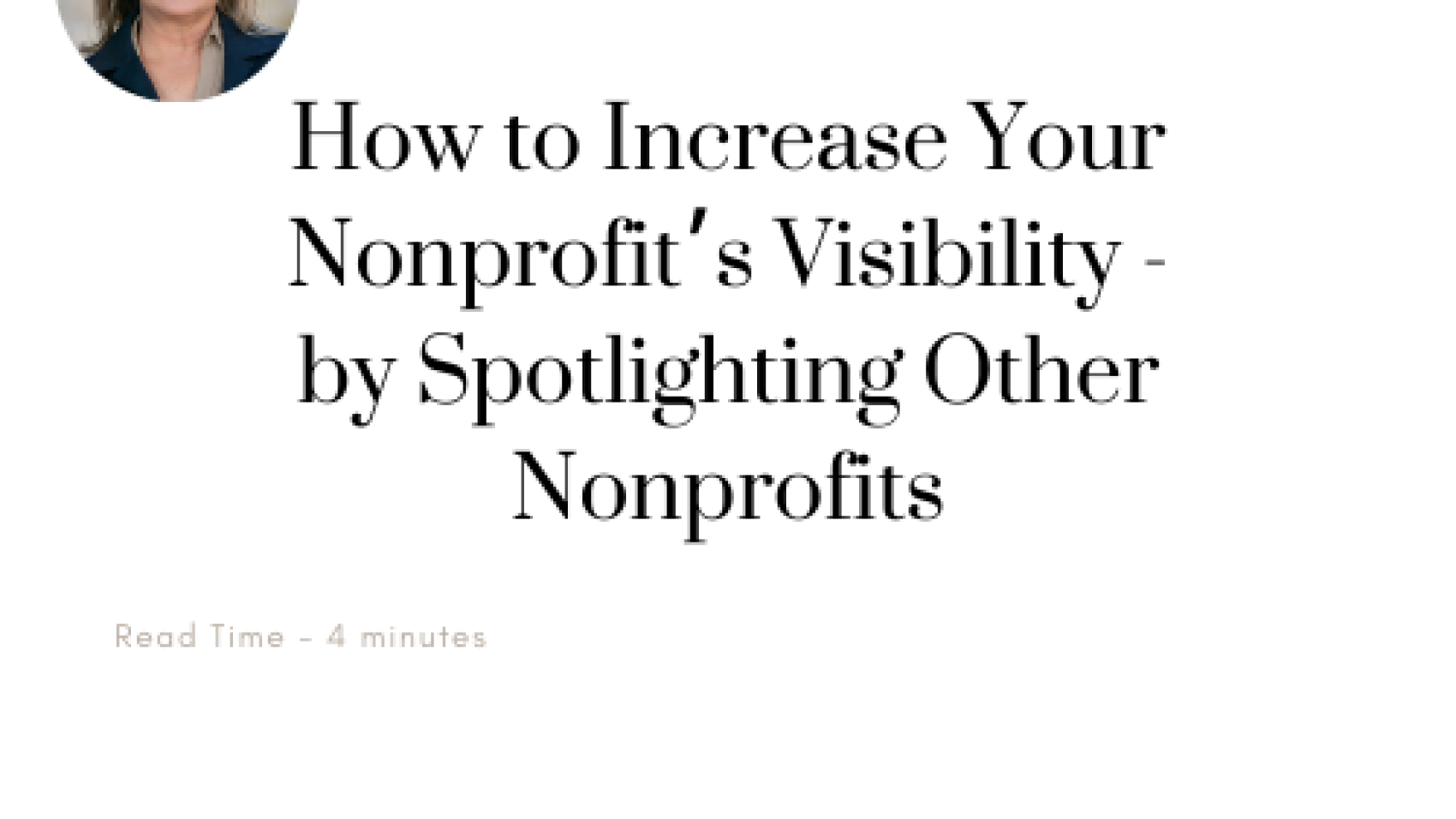The First Time File (Stories of doing something scary and surviving)
Improv Beats Brainstorming
Want a more effective way to generate ideas? Take a page out of improv. While brainstorming is a known technique for idea generation, it often falls flat because
1. Groupthink: Participants might conform to dominant ideas, suppressing unique perspectives and innovative solutions.
2. Dominant Voices: Louder or more assertive individuals may overshadow quieter participants, leading to an unbalanced contribution of ideas.
3. Evaluation Anxiety: Fear of judgment can inhibit participants from sharing unconventional or “out-there” ideas, limiting creativity.
If you’re looking for fresh ideas to problem solving, take a cue from improv and do this instead.
Break your group into tables of 6-8 people, depending on the number of people participating. More than 8 people per table makes it difficult to iterate. I find 6 is a sweet spot. If your group is 7 or less people, don’t break it up. Go with one group.
1. Briefly discuss with your group the problem with which you’d like help.
2. Give each person a 5 x 8 notecard.
3. Give people 3-4 minutes to think about the problem.
4. Each person writes down one solution to the problem, in two sentences or less. 5. Each person then passes their own notecard to their left.
6. Next to each solution offered, each person now writes Yes, and + 1 refining detail to strengthen that idea.
Repeat until everyone gets their original notecard back.
Weekends – Your Burnout Prevention Goldmine
We all know the feeling of dragging ourselves through the week, living for the weekend, and finding those precious days slipping away in a blur of chores and catch-up work.
Then, we pin our hopes on that two-week vacation that requires us to work like mad before we leave and again when we get back to “catch up.” But what if there was a better way?
What if I told you that the secret to avoiding burnout and enhancing your overall wellbeing lies not in the sporadic two-week vacation, but in the consistent and intentional use of your weekends?
The breakdown:
A typical two-week vacation gives you 336 hours (14 days x 24 hours).
Compare that to the 52 weekends we get each year. Each weekend offers 48 hours (2 days x 24 hours), totaling a whopping 2,496 hours annually (52 weekends x 48 hours).
That’s over seven times the amount of time you get from a two-week vacation! And how can you get more out of your weekend?
Prioritize and Have a Plan
1. Make a list of your weekly chores and tasks. Divy up those chores across your week in a way that works best for you and your schedule. Ask yourself some questions. What can be automated (bill paying)? What can be combined (laundry and meal prep)? What can be outsourced (Grocery curbside pickup)?
Make a plan each quarter for how you’ll spend your weekends. Without an advance plan of where and how you want to spend your weekend, it is really easy for that wonderful time to slip away , and suddenly it is Monday.
What gives you energy, makes you happy? Do more of that. Take a nap on Saturday. Take a weekend trip to a new-to-you town. Chat with your partner over a morning coffee. Go for a run with your friends. Take your kids for an ice cream after a blast at the playground.
It may take you awhile to get into the routine of utilizing your weekends for fun and recharge, but the reward is starting Monday recharged.
What can you do with 2,496 hours? #banishburnout
How to Increase Your Nonprofit’s Visibility by Spotlighting Other Nonprofits
Have you ever said/thought, “we’re a best kept secret?”
I hear it all the time and it is a heartbreaker because I know that means the people and foundations that want to support that work won’t find those nonprofit organizations.
Visibility for your nonprofit organization is vital so that funders, supporters, and connectors know who you are and what you help make happen.
But many nonprofits overlook easy opportunities to gain visibility. They’re tunneled into communicating what they do. And because of that often view other nonprofits as competitors rather than complementors.
But get this.
One of the easiest ways to raise your visibility is to lift up the work of complimentary nonprofits.
What?
I’m not suggesting you just hop online every day and “like” the work of other nonprofits.
I’m suggesting you be strategic in highlighting nonprofits that work in complimentary ways to your organization.
And is this issue I show you how to grow your visibility by lifting up the work of other nonprofits.
Let’s jump in.
- Which nonprofits work to solve the same problem as you, but from a different starting point?

Say you’re a nonprofit that helps people with intellectual and developmental disabilities get and maintain a job. Natural complementors for you are your local, regional, state, and national disability advocacy organizations.
- Spotlight Your Complementors
Instead of only writing about your work, highlight and spotlight the work of your complimentary nonprofits, explaining how what they do means you can do more of what you do.
This is a super easy way to grow your visibility.
And when you do this consistently, the other nonprofits will often return the favor. You’ve helped them show the impact of their work as well. Which can lead to new followers and supporters for you. And more opportunities for the people or cause you serve.
Win/Win/Win
Key Point: Be consistent. This isn’t a one and done proposition. Build a strategic once a month nonprofit spotlight into your communications. But keep it simple. Use a template, and then fill in the blank. Doesn’t need to be fancy but does need to be consistent.
Here’s an example. Feel free to copy, paste with your customized fill in the blanks.
Shout out to <<Nonprofit Organization Name>> Their work on _________________ means people with intellectual and developmental disabilities can ______________________.
Create the template that works for you and then repeat, repeat.
- Be a Connector
In addition to highlighting a complementor, connect your strategic complementors. Look for ways to amplify their work by connecting your complementors to each other as well.
When you’re known as a connector, you are viewed as a thought leader, helpful, and valuable. All which help raise your visibility.
Final Thoughts
What many nonprofit leaders don’t realize is that growing your supporters is about more than grinding out 3 posts a week on your activities. That is isolating and insular.
Supporting your complementors on their journey doesn’t take away from your visibility. It actually amplifies it by broadening your network, expanding your audience, and strengthening your relationships.
Strategically highlight other nonprofits and watch your visibility skyrocket.


